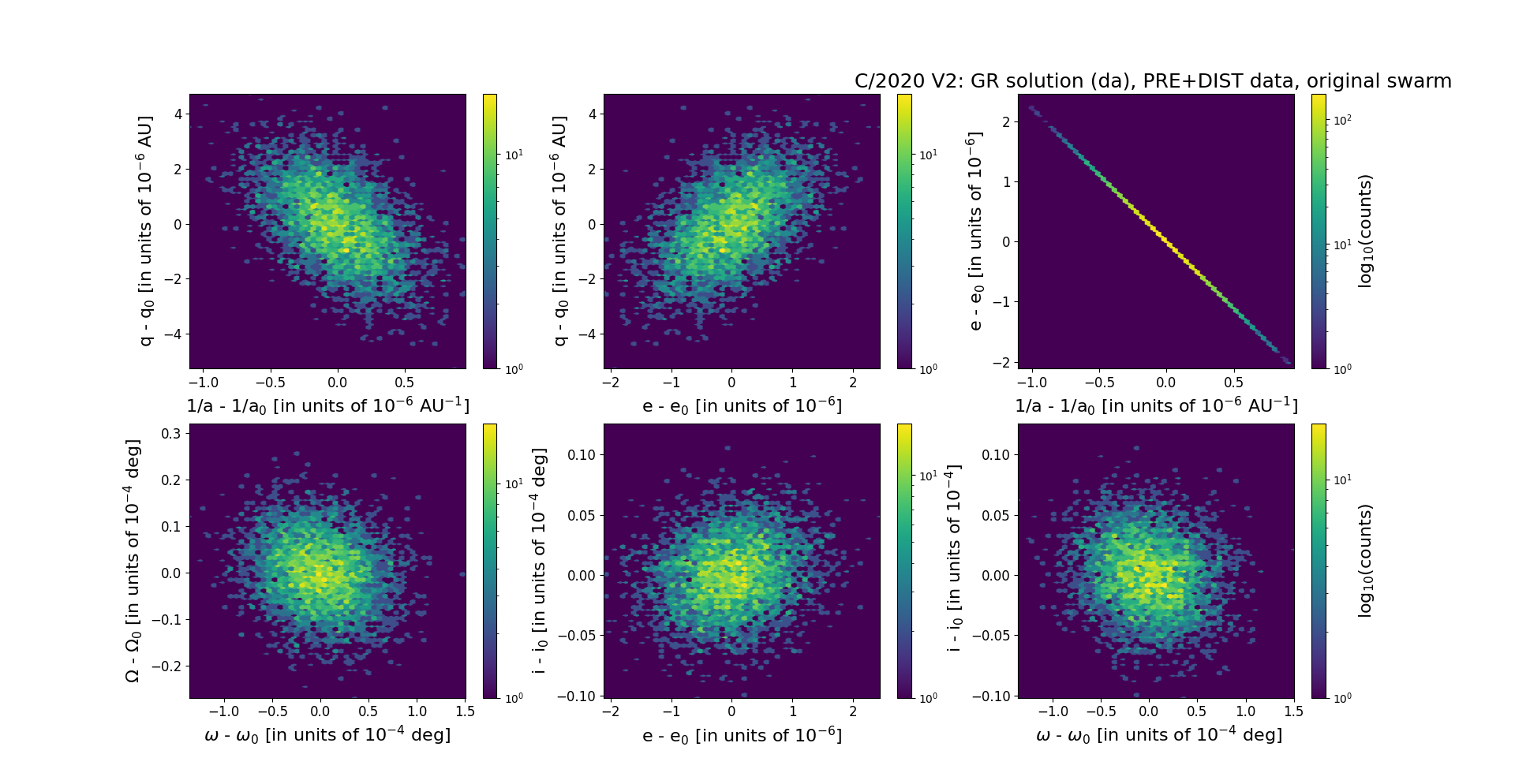C/2020 V2 ZTF
more info
Comet C/2020 V2 was discovered on 2 November 2020, about 2.5 yr before its perihelion passage; later a series of prediscovery images was found going back to 18 April 2020 (10.08 au from the Sun). In the moment of orbit determination, this comet was still observed.
Currently, solutions (GR and NG) based on pre-perihelion data are given. Therefore, the data arc span over 3.0 yr in a range of heliocentric distances from 10.08 au to 2.24 au.Orbits based on a distant part of data arc are also given (helicentric distances greater than 3.5 au).
This is Oort spike comet. According to orbits obtained using pre-perihelion data this comet suffers rather small planetary perturbations that lead to escape this comet from the solar system on hyperbolic orbit.
Currently, solutions (GR and NG) based on pre-perihelion data are given. Therefore, the data arc span over 3.0 yr in a range of heliocentric distances from 10.08 au to 2.24 au.Orbits based on a distant part of data arc are also given (helicentric distances greater than 3.5 au).
This is Oort spike comet. According to orbits obtained using pre-perihelion data this comet suffers rather small planetary perturbations that lead to escape this comet from the solar system on hyperbolic orbit.
| solution description | ||
|---|---|---|
| number of observations | 2732 | |
| data interval | 2020 04 18 – 2022 08 28 | |
| data arc selection | data generally limited to pre-perihelion (PRE) | |
| range of heliocentric distances | 10.08 au – 3.55au | |
| detectability of NG effects in the comet's motion | comet with determinable NG~orbit | |
| type of model of motion | GR - gravitational orbit | |
| data weighting | YES | |
| number of residuals | 5364 | |
| RMS [arcseconds] | 0.21 | |
| orbit quality class | 1a+ | |
| orbital elements (barycentric ecliptic J2000) | ||
|---|---|---|
| Epoch | 1722 11 10 | |
| perihelion date | 2023 05 09.73797050 | ± 0.00014308 |
| perihelion distance [au] | 2.22490693 | ± 0.00000137 |
| eccentricity | 0.99995274 | ± 0.00000065 |
| argument of perihelion [°] | 162.539731 | ± 0.000036 |
| ascending node [°] | 212.331789 | ± 0.000007 |
| inclination [°] | 131.649137 | ± 0.000003 |
| reciprocal semi-major axis [10-6 au-1] | 21.24 | ± 0.29 |
| file containing 5001 VCs swarm |
|---|
| 2020v2da.bmi |

